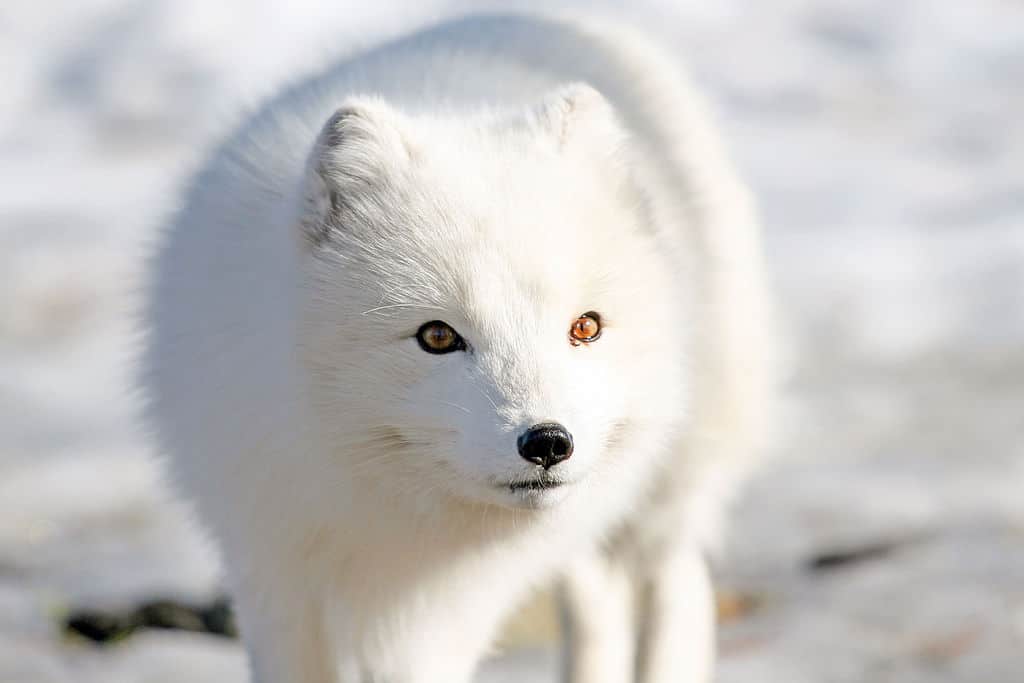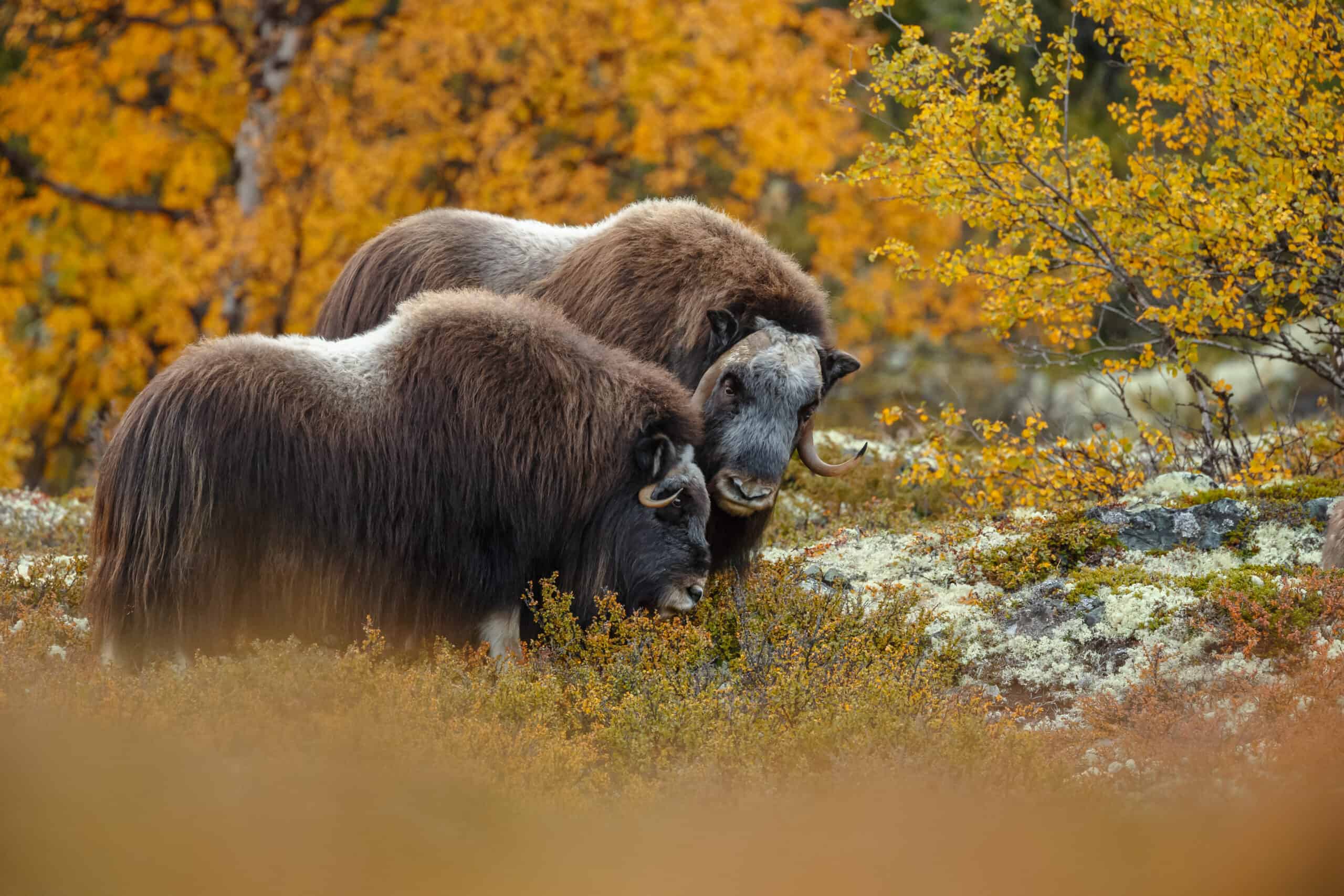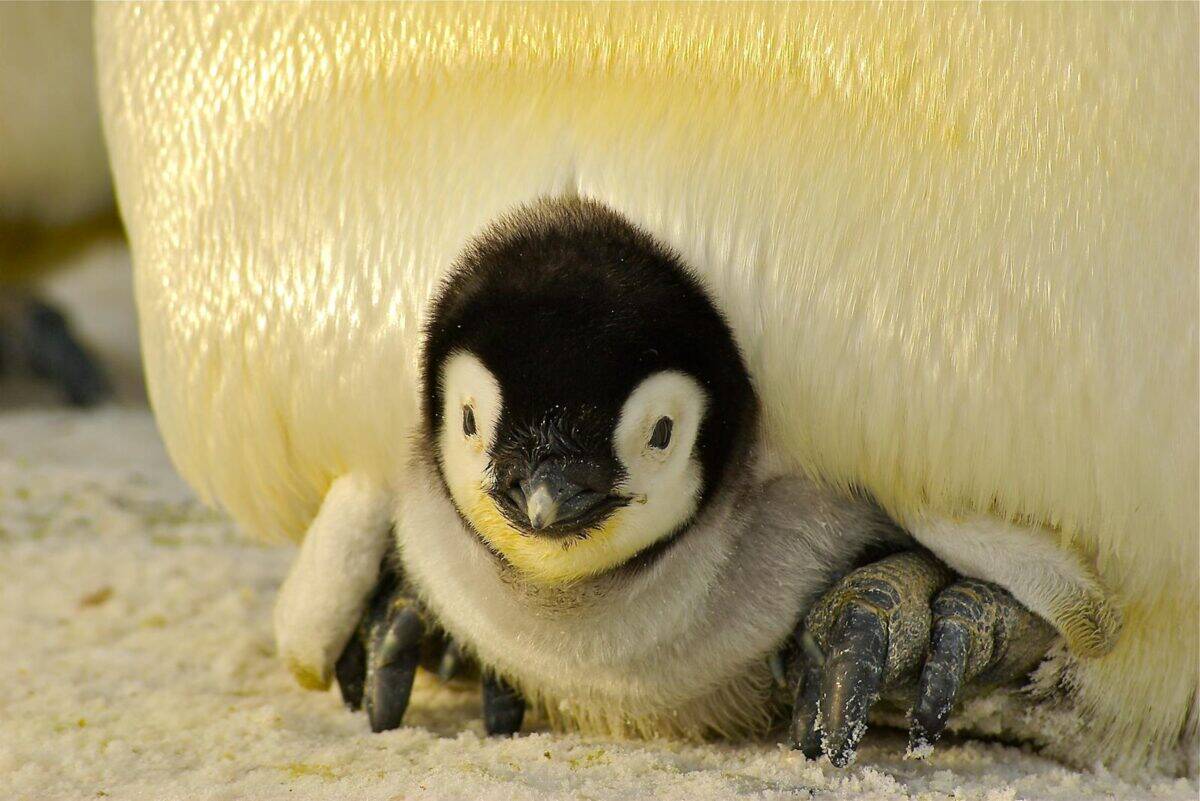While most animals retreat from winter’s icy grip, some remarkable creatures have evolved not just to survive but to thrive in extreme cold. From microscopic organisms hidden in ice sheets to furry mammals that maintain body heat in temperatures that would kill humans within hours, these cold-weather specialists showcase nature’s incredible adaptability. Their physiological and behavioral adaptations represent millions of years of evolutionary fine-tuning that allows them to make freezing environments their home. Let’s explore 13 fascinating creatures that embrace the cold, revealing the ingenious survival strategies that enable life to flourish in Earth’s most frigid regions.
13. Emperor Penguins Masters of Antarctic Survival

Emperor penguins stand as the ultimate symbol of cold-weather adaptation, enduring Antarctica’s brutal winter temperatures that plummet to -40°F (-40°C) and beyond. These regal birds have developed multiple layers of defense against the cold. Their dense, overlapping feathers create an impenetrable waterproof outer layer, while underneath lies a thick insulating layer of fat that can reach 4 inches (10 cm). Perhaps most impressive is their colony behavior—emperors huddle together in tight formations, rotating positions so each penguin gets a turn in the warmer interior. This cooperative strategy can raise the temperature within the huddle to 77°F (25°C), a remarkable 112°F (62°C) warmer than the surrounding air. During the darkest Antarctic winter, male emperors endure two months without food while incubating eggs on their feet, using a special brood pouch to keep the eggs at 95°F (35°C) despite the freezing conditions around them.
12. Arctic Fox The Color-Changing Cold Specialist

The Arctic fox has evolved into one of the most cold-resistant mammals on Earth, comfortable in temperatures as low as -58°F (-50°C). Their extraordinary adaptation begins with their compact body design—short legs, short muzzle, and small rounded ears all minimize heat loss by reducing exposed surface area. Their most visible winter adaptation is their spectacular white coat transformation, which provides both camouflage and superior insulation. This winter coat has the best insulating properties of any mammal, with fur even covering the soles of their feet for added warmth and traction on ice. Arctic foxes maintain a constant body temperature by adjusting their metabolic rate as needed, and employ a counter-current heat exchange system in their limbs that preserves core body heat. These remarkable foxes have been documented curling into balls during blizzards, using their bushy tails as protective scarves over their faces while they wait out the storm.
11. Snow Leopards High-Altitude Cold Conquerors

Snow leopards have mastered survival in the frigid, oxygen-thin environment of the Himalayan mountains, regularly living at elevations between 9,800 and 17,000 feet (3,000-5,200 meters) where temperatures frequently drop below -40°F (-40°C). Their extraordinary adaptations include an exceptionally thick fur coat that can reach almost 5 inches (12 cm) on their bellies, providing insulation against snow and ice when resting. Their massive paws act like natural snowshoes, distributing weight evenly to prevent sinking in deep snow, while also featuring fur between the toe pads for added warmth and traction. Snow leopards possess enlarged nasal cavities that warm incoming air before it reaches their lungs, and their signature long tails—nearly as long as their bodies—serve both as balance aids when navigating treacherous terrain and as warm wraps during sleep. Their metabolic efficiency allows them to survive on sparse prey in this harsh environment, sometimes going a week or more between substantial meals while maintaining their energy reserves.
10. Polar Bears The Arctic’s Apex Predator

Polar bears represent the pinnacle of cold-weather adaptation among large predators, thriving in Arctic conditions where temperatures can reach -50°F (-45°C). Their specialized physiology begins with a layer of blubber up to 4.5 inches (11.5 cm) thick and a dense undercoat topped by guard hairs that can measure up to 6 inches (15 cm) long. This insulation is so effective that polar bears often overheat during physical exertion, even in freezing temperatures. What appears as white fur is actually transparent hollow hairs that reflect visible light while trapping heat from the sun and directing it toward their black skin, which absorbs the warmth. Their massive paws, measuring up to 12 inches (30 cm) across, distribute their weight when walking on thin ice and feature small bumps called papillae that provide crucial traction. Polar bears are such efficient cold-weather machines that they have more problems with overheating than freezing, and will often roll in snow to cool down after running.
9. Wood Frogs The Freeze-Tolerant Amphibians

Wood frogs employ one of the most extraordinary cold-weather survival strategies in the animal kingdom—they allow themselves to freeze nearly solid during winter. As temperatures drop, these remarkable amphibians produce high concentrations of glucose and urea in their tissues, which functions like natural antifreeze, preventing fatal ice formation inside their cells. During deep freeze, up to 65% of the frog’s total body water turns to ice, their hearts stop beating, and they cease breathing entirely. Their cells shrink as water is drawn out to form ice in the spaces between organs. By most clinical definitions, they appear dead. When spring arrives and temperatures rise, the ice melts, their hearts restart, and they resume normal function within hours—essentially returning from death. Wood frogs can survive multiple freeze-thaw cycles and temperatures as low as 21°F (-6°C). This remarkable ability allows them to be among the first amphibians to emerge and breed in spring, sometimes even while snow still covers parts of their habitat.
8. Musk Oxen Ice Age Survivors

Musk oxen represent living relics from the last Ice Age, equipped with adaptations refined over thousands of years to handle the Arctic’s extreme conditions. Their most distinctive feature is their remarkable two-layer coat—a soft, insulating underwool called “qiviut” that’s eight times warmer than sheep’s wool and finer than cashmere, covered by long guard hairs that can reach 24 inches (60 cm) in length and shed water and snow effectively. This insulation is so efficient that snow landing on a musk ox’s back doesn’t melt, as almost no body heat escapes. Their compact, stocky build minimizes surface area and heat loss, while their digestive system has evolved to extract maximum nutrition from sparse Arctic vegetation. When threatened, musk oxen form their famous defensive circle, adults facing outward with calves protected in the center—a strategy that has helped them survive predators for millennia. Their metabolic rate drops significantly in winter, allowing them to conserve energy while continuing to forage through the snow with specialized split hooves that function as effective digging tools.
7. Tardigrade Microscopic Cold-Weather Champions

Tardigrades, often called water bears or moss piglets, represent perhaps the most extreme cold-temperature survivors on Earth despite their minuscule size (typically 0.002 to 0.05 inches, or 0.05 to 1.2 mm). These microscopic eight-legged animals can enter a state called cryptobiosis when conditions become too harsh, essentially shutting down their metabolism almost completely. During this state, they lose up to 97% of their body water, produce protective proteins, and can survive temperatures as low as -458°F (-272°C)—just one degree above absolute zero, the coldest theoretically possible temperature in the universe. Research has shown they can survive in this frozen state for over 30 years, essentially suspended between life and death until conditions improve. Even more remarkably, tardigrades have survived direct exposure to the vacuum and radiation of space during scientific experiments. Their unparalleled survival capabilities stem from unique proteins that prevent cellular damage during freezing and the ability to repair DNA damage efficiently when they rehydrate and revive.
6. Wolverines Tenacious Cold-Weather Predators

Wolverines have earned their reputation as one of the toughest cold-weather predators, specifically adapted to thrive in snowy, mountainous terrain where winter temperatures regularly reach -40°F (-40°C). Despite weighing just 20-40 pounds (9-18 kg), these muscular members of the weasel family can bring down prey many times their size, including deer and small moose when conditions favor them. Their specialized adaptations include large, partially webbed feet that function as natural snowshoes, allowing them to run atop deep snow where other predators sink. Their extremely dense, oily fur resists frost formation and provides exceptional insulation—so effective that wolverines in zoos often show signs of heat stress at temperatures above freezing. Wolverines possess powerful jaws and specialized molars for crushing frozen meat and bones, allowing them to scavenge carcasses other animals cannot utilize in winter. Their metabolism runs extraordinarily hot, requiring constant foraging across territories that can span up to 500 square miles (1,300 square kilometers) as they search for food in some of North America’s most unforgiving environments.
5. Antarctic Icefish Cold-Blooded Marvels

Antarctic icefish represent one of evolution’s most remarkable cold-temperature specializations—they’re the only vertebrates on Earth with no hemoglobin or red blood cells. These fish thrive in waters consistently below 32°F (0°C), the freezing point of freshwater. Their clear, almost ghostly appearance comes from the complete absence of hemoglobin, which normally gives blood its red color. Instead of using hemoglobin to transport oxygen, icefish have extraordinarily large hearts that pump a high volume of blood, and their body tissues absorb oxygen directly from the water through their enlarged gills and highly vascularized skin. They produce antifreeze glycoproteins that bind to ice crystals, preventing them from growing larger and damaging tissues. The oxygen-rich, near-freezing waters they inhabit can hold nearly twice the oxygen of warmer waters, making their unusual adaptation possible. With about 25 species identified, these fish represent an evolutionary solution found nowhere else on the planet—a vertebrate that completely eliminated what was once considered an essential component of the circulatory system.
4. Arctic Ground Squirrels The Subzero Hibernators

Arctic ground squirrels have developed perhaps the most extreme hibernation strategy of any mammal, employing a remarkable physiological trick that scientists are still working to fully understand. During their winter hibernation, these small rodents allow their body temperature to drop below freezing—the only known mammal to survive with a core temperature below 32°F (0°C). In their deepest hibernation state, their body temperature can reach 26.6°F (-3°C), while their brain remains just above freezing through specialized protective mechanisms. Their heart rate drops from 200-300 beats per minute to just 3-10, and they take only a few breaths per minute. To prepare for this incredible shutdown, they build up massive fat reserves, increasing their body weight by 50% or more in late summer. Every two to three weeks during their seven-month hibernation, they shiver themselves warm for about 12-15 hours before returning to their supercooled state—a process that consumes 86% of their winter energy budget but appears necessary to protect neural function. Medical researchers study these squirrels hoping to apply their cold-tolerance mechanisms to improve organ preservation for human transplants.
3. Snowy Owls Arctic Aerial Predators

Snowy owls have evolved a comprehensive suite of adaptations that make them perfectly suited for Arctic conditions where temperatures commonly reach -40°F (-40°C) during hunting expeditions. Unlike many birds that migrate south for winter, these magnificent predators often move further north, following their preferred prey onto sea ice. Their legendary cold resistance begins with their feathers—they are among the most heavily feathered birds in the world, with insulating plumage covering even their feet and bill base. This insulation is so effective that snowy owls must frequently dissipate excess heat by exposing their feet or panting, even in subzero temperatures. Their large body size compared to other owls creates a favorable surface-to-volume ratio that conserves heat, while their predominantly white plumage provides camouflage and may also have thermal advantages by minimizing radiative heat loss. Their specialized hearing allows them to detect prey movements under thick snow, and their exceptional vision enables hunting in the Arctic’s extended twilight periods. Snowy owls can catch and consume up to 12 lemmings daily to maintain their high metabolic needs in extreme cold.
2. Svalbard Reindeer Arctic Archipelago Specialists

Svalbard reindeer have adapted to one of the world’s northernmost land habitats, evolving distinct characteristics that separate them from mainland reindeer species. These compact, short-legged reindeer have exceptional insulation—their winter coat contains hairs with air-filled cavities that provide superior thermal properties compared to solid hairs, and their guard hairs are particularly dense at up to 2000 per square centimeter. Their specialized nose structure warms incoming air before it reaches their lungs, recapturing body heat and moisture that would otherwise be lost during exhalation. Perhaps most remarkably, these reindeer have developed the ability to lower their metabolic rate by up to 70% during winter, entering a state of semi-hibernation despite remaining active and foraging. Their fat reserves are strategically distributed, with significant insulating deposits on their rump, back, and around vital organs. Unlike many Arctic animals with white winter coats, Svalbard reindeer maintain a dark coat year-round, which appears to offer advantage in absorbing limited winter sunlight for warmth at these extreme northern latitudes where they experience four months of complete darkness each winter.
1. Psychrophilic Bacteria Life in the Extreme Cold

Psychrophilic (cold-loving) bacteria represent Earth’s most remarkable cold specialists, actively growing and reproducing at temperatures where most life simply shuts down. These microorganisms thrive in environments like Arctic and Antarctic sea ice, glaciers, and even cloud droplets in the upper atmosphere. Their extraordinary adaptations include the production of specialized enzymes that remain flexible and functional at temperatures where normal proteins would become rigid and ineffective. Some species, like Psychromonas ingrahamii, can actively reproduce at temperatures as low as 23°F (-5°C). Their cell membranes contain higher proportions of unsaturated and branched fatty acids, which maintain crucial flexibility in freezing conditions. Many species produce antifreeze proteins and cryoprotectants that prevent damaging ice crystal formation. Some psychrophiles have evolved the ability to move between microscopic liquid water channels within seemingly solid ice. These cold-adapted bacteria play crucial ecological roles in nutrient cycling in polar regions and may represent how life could exist on other frozen worlds in our solar system, such as Jupiter’s moon Europa or Saturn’s moon Enceladus.
Remarkable Cold Adaptations: Nature’s Ingenuity at Work

The 13 creatures we’ve explored demonstrate that freezing temperatures, far from being a barrier to life, have served as evolutionary catalysts for some of nature’s most ingenious adaptations. From microscopic bacteria with flexible enzymes to massive polar bears with specialized heat-trapping fur, each organism represents a unique solution to the challenges posed by extreme cold. These adaptations haven’t developed overnight but are the result of millions of years of natural selection, with each species finding its own pathway to cold-weather survival. Beyond their scientific importance, these remarkable creatures remind us of life’s extraordinary resilience and adaptability in even the most challenging environments on our planet. As climate change increasingly threatens cold-weather habitats worldwide, understanding and protecting these specialized species becomes not just a scientific imperative but an ethical responsibility to preserve these evolutionary marvels for future generations.
- 14 Reasons Chickens Make Surprisingly Great Pets - August 16, 2025
- Yellowstone Grizzlies Are Back and They Mean Business - August 16, 2025
- 12 Animals That Change Color Instantly - August 16, 2025

